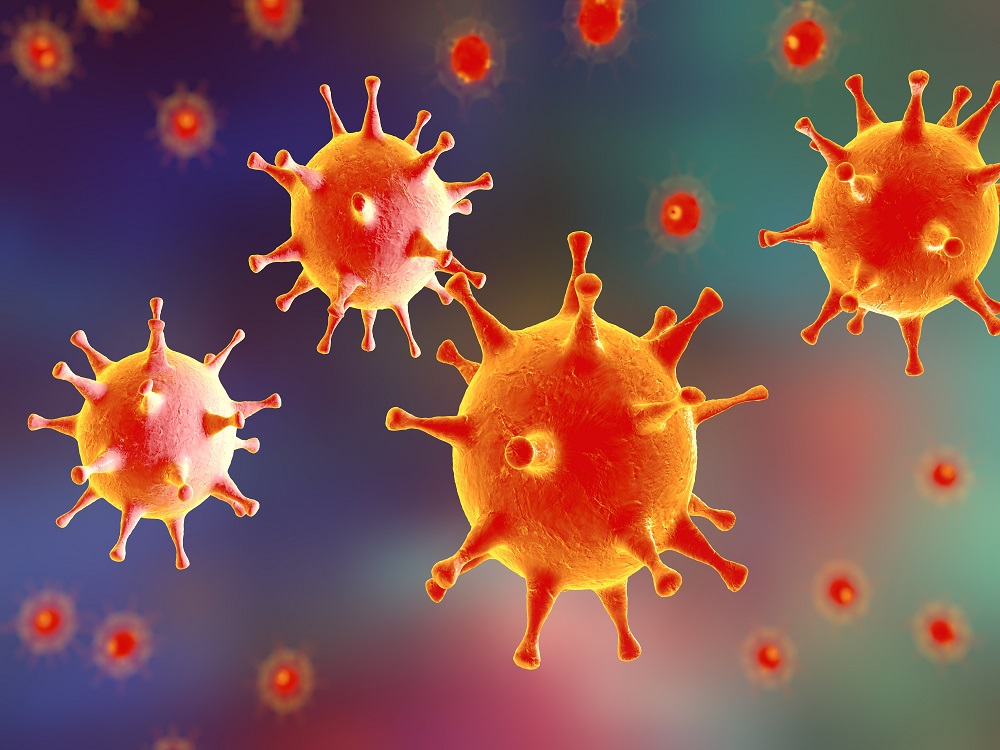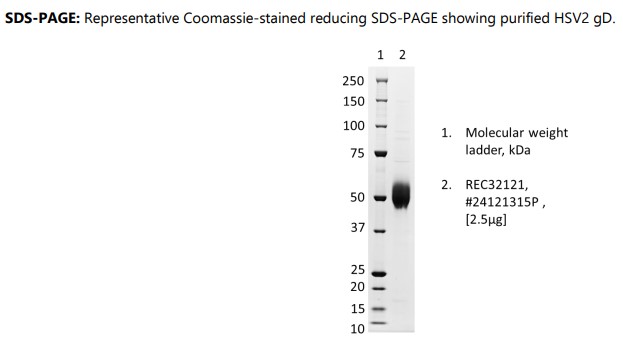Herpes simplex virus 2 glycoprotein D, Recombinant
Price range: $492.90 through $2,094.83 excl. VAT
Herpes simplex virus 2 (HSV-2) strain 333 glycoprotein D (gD) AA1-338, C-terminal His-tag, produced in HEK293 cells and purified by affinity chromatography and dialysis.
Herpes simplex virus 2 glycoprotein D, Recombinant
Herpes simplex virus 2 (HSV-2) strain 333 glycoprotein D (gD) AA1-338, C-terminal His-tag, produced in HEK293 cells and purified by affinity chromatography and dialysis.
PRODUCT DETAILS – Herpes simplex virus 2 glycoprotein D, Recombinant
- Strain 333 (Accession: ABU45461.1)
- Tag: 6xHis, C-Terminus
- Expressed and purified from HEK293 cells
- Presented as liquid in DPBS
BACKGROUND
HSV-2 is often known as genital herpes, and is one of the most common sexually transmitted diseases. Infection with HSV-2 can cause genital ulcerations, which may be accompanied by fever, local lymphadenopathy and dysuria, and infected individuals have a lifelong risk of transmitting the viral infection to their sexual partners. There is evidence of an increased risk of human immunodeficiency virus (HIV) acquisition with herpes-associated genital ulceration (1) and pregnant women infected with HSV-2 can infect children during delivery (2,3), causing neonatal herpes.
Without therapy, mortality for untreated infants who develop disseminated infection exceeds 70%, with many survivors developing neurological impairment related to HSV encephalitis. Around 70% of mothers who transmit HSV to their children are asymptomatic at delivery. Importantly, it has been shown that transmission rates are much higher during a primary infection of the mother (> 50%) compared to recurrent infection (< 5%)(4). This is important in relation to immunoassays for maternal HSV-2 specific IgG and IgM, where primary infections are characterised by IgM responses but no IgG response.
After primary HSV infection, the virus colonises sensory neurons, and the infection may reactivate causing recurrent sub-clinical or clinical infection. Many serologic methods for assessing HSV sero-status use viral lysate as antigens. However, the viral lysate assays are unable to differentiate HSV-1 infections from HSV-2 infections due to the antigenic similarity between the viruses. Given that HSV-1 infection is extremely common in adults, such assays are unable to detect HSV-2 infection with any confidence. The purified Herpes Simplex virus gG2 protein can be used to develop specific HSV-2 assays, which are valuable in determining the HSV-2 status of expectant mothers, and allowing clinicians to make appropriate therapeutic interventions for potentially infected newborns.
REFERENCES
- 1. Gray, R. H. et al. (2001) Probability of HIV-1 transmission per coital act in monogamous, heterosexual, HIV-1-discordant couples in Rakai, Uganda. Lancet 357:1149-1153.
- 2. Kohl, S. (1999). Herpes simplex infections in newborn infants. Semin. Ped. Infect. Dis. 10:154-160.
- 3. Whitley, R. J. (1993). Neonatal herpes simplex virus infections. J. Med. Virol. 1993(Suppl. 1):13-21
- 4. Prober, C. G. et al. (1992). The management of pregnancies complicated by genital infections with herpes simplex virus. Clin Infect Dis. 15:1031-1038.


